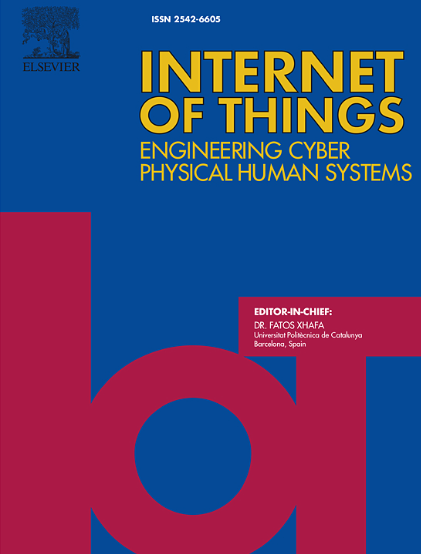An IoT-enabled EEG headphones with customized music for chronic tinnitus assessment and symptom management
IF 6
3区 计算机科学
Q1 COMPUTER SCIENCE, INFORMATION SYSTEMS
引用次数: 0
Abstract
Chronic tinnitus often affects elderly or hearing-impaired individuals, which can disturb their daily lives by disrupting concentration and limiting communication. Clinically, sound masking using external sounds like white noise (WN) aims to mask tinnitus and relieve secondary symptoms. Even when symptoms are relieved, tinnitus often requires long-term management, and for patients to visit healthcare professionals regularly. Generally, it could make maintaining symptom management challenging due to the time and effort required for consistent follow-ups. EEG is considered as one of the objective marker for assessing tinnitus symptoms. In this study, we designed IoT-enabled EEG sensing (IEES) headphones, an innovative IoT device that provided customized music (CM) and EEG measurement. The headphones employed a pitch-matching (PM) method to create CM tailored to each patient at specific frequencies for tinnitus patients. To collect EEG measurements, the device incorporated OpenBCI electrodes and a sensing chip to monitor brain waves and evaluate the outcomes.. After 30 days of experiment, participants showed significant reductions in both tinnitus handicap inventory (THI) scores and visual analog scale for annoyance (VAS-A) scores. In comparison, tinnitus frequency showed a slight reduction. EEG measurements demonstrated an increase in alpha band activity. In questionnaires, patients reported high satisfaction with their experiences. These findings highlight the potential of the proposed method for chronic tinnitus assessment and symptom management.
支持物联网的脑电图耳机,可为慢性耳鸣评估和症状管理定制音乐
慢性耳鸣常常影响老年人或听力受损的人,会扰乱他们的注意力,限制交流,从而影响日常生活。在临床上,使用白噪声(WN)等外部声音进行声音掩蔽的目的是掩蔽耳鸣,缓解继发性症状。即使症状得到缓解,耳鸣通常也需要长期治疗,患者需要定期到医疗机构就诊。一般来说,由于持续随访所需的时间和精力,这可能会使维持症状管理具有挑战性。脑电图被认为是评估耳鸣症状的客观指标之一。在这项研究中,我们设计了支持物联网的脑电图传感(IEES)耳机,这是一款创新的物联网设备,可提供定制音乐(CM)和脑电图测量。该耳机采用音高匹配(PM)方法,为每位耳鸣患者量身定制特定频率的音乐。为了收集脑电图测量结果,该设备集成了 OpenBCI 电极和传感芯片,用于监测脑电波和评估结果。经过 30 天的实验,参与者的耳鸣障碍量表(THI)评分和恼人程度视觉模拟量表(VAS-A)评分均有显著下降。相比之下,耳鸣频率略有降低。脑电图测量显示阿尔法波段活动增加。在问卷调查中,患者对自己的经历表示非常满意。这些发现凸显了该方法在慢性耳鸣评估和症状管理方面的潜力。
本文章由计算机程序翻译,如有差异,请以英文原文为准。
求助全文
约1分钟内获得全文
求助全文
来源期刊

Internet of Things
Multiple-
CiteScore
3.60
自引率
5.10%
发文量
115
审稿时长
37 days
期刊介绍:
Internet of Things; Engineering Cyber Physical Human Systems is a comprehensive journal encouraging cross collaboration between researchers, engineers and practitioners in the field of IoT & Cyber Physical Human Systems. The journal offers a unique platform to exchange scientific information on the entire breadth of technology, science, and societal applications of the IoT.
The journal will place a high priority on timely publication, and provide a home for high quality.
Furthermore, IOT is interested in publishing topical Special Issues on any aspect of IOT.
 求助内容:
求助内容: 应助结果提醒方式:
应助结果提醒方式:


